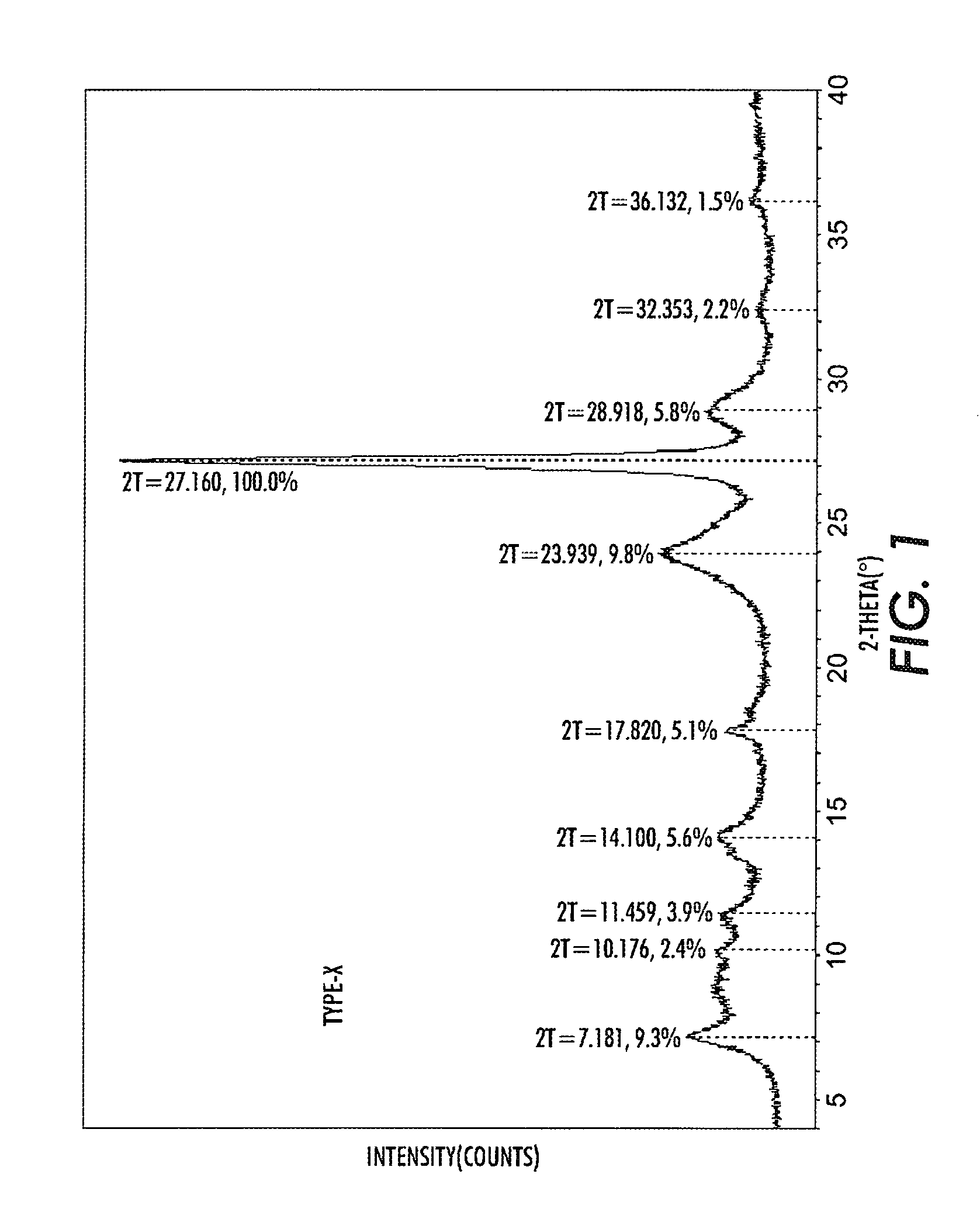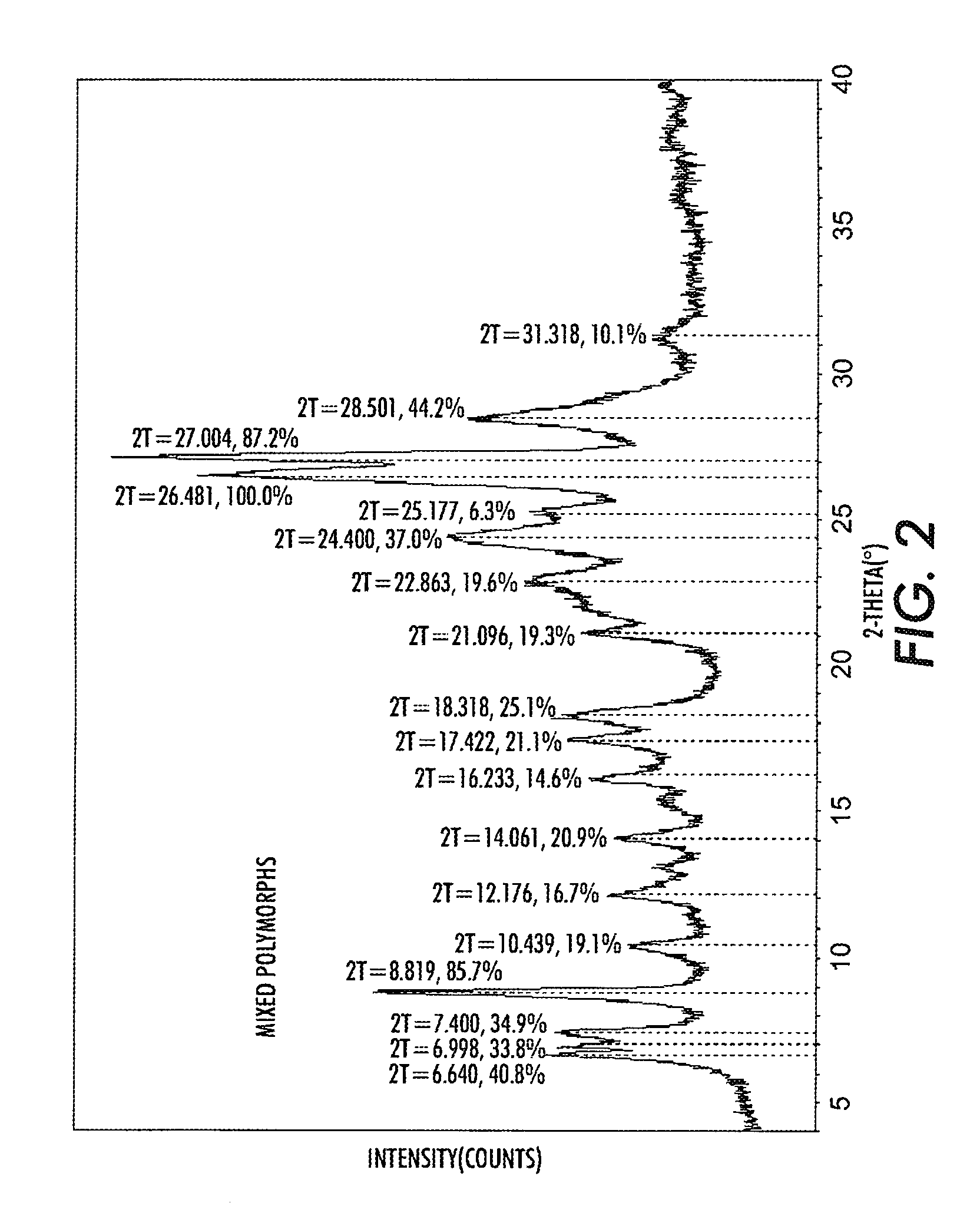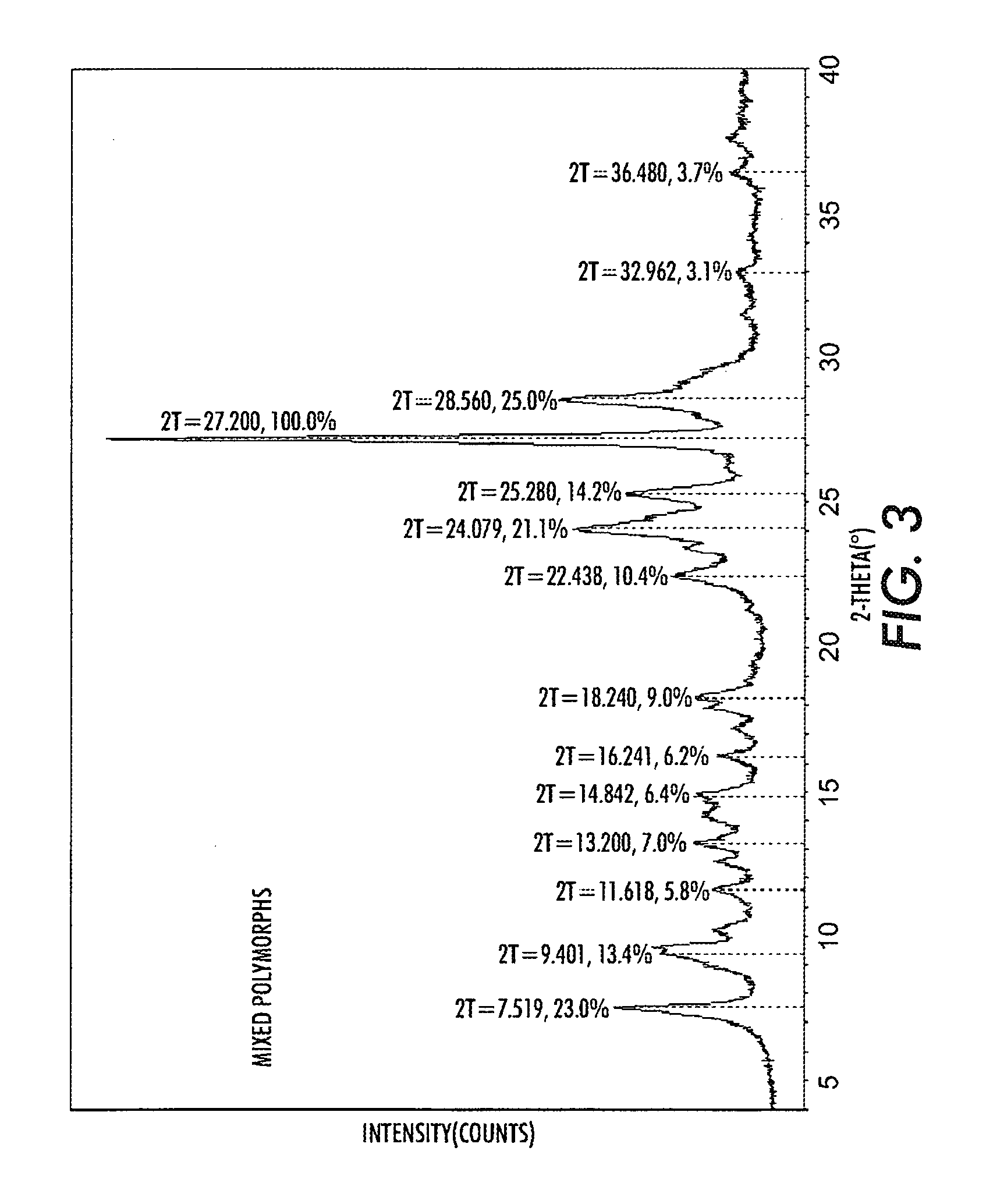Process for making organic photosensitive pigment
a photosensitive pigment and organic technology, applied in the crystal growth process, organic chemistry, instruments, etc., can solve the problems of inability to obtain the final product with all the right properties, the ability to prolong the cycle, and the degradation of image quality during extended cycling
- Summary
- Abstract
- Description
- Claims
- Application Information
AI Technical Summary
Benefits of technology
Problems solved by technology
Method used
Image
Examples
example 1
[0039]10 g TiOPc Type I was dissolved in a mixture of 12 ml trifluoroacetic acid (TFA) and 48 ml methylene chloride under agitation for 1 hour. The solution was then added dropwise over about 2 hours to a mixture of 295 ml methanol and 300 ml methylene chloride containing also 5 ml of deionized water, kept under agitation at under −10° C. The separated pigment was filtered from the solvent, reslurried in 300 ml methanol, and filtered again to obtain a wet cake. The wet cake was reslurried in 200 ml hot deionized water at about 80° C. for 10 minutes after which the pigment was filtered off to produce a wet cake. The hot water wash and filtration was repeated two more times. The wet cake was then reslurried in 300 ml cold (room temperature) deionized water and the pigment was recovered by filtration. A small sample of the pigment taken at this time and it was dried. The XRPD of this sample showed that the crystal form of the pigment is TiOPc type X as shown in FIG. 1.
[0040]The wet cak...
example 2
[0044]The same process was followed as in Example 1, however, the volume ratio (v / v) of the methanol / methylene chloride mixture used for precipitating the titanyl phthalocyanine was varied from about 0.33 / 1 to about 1 / 1 in the different samples. It was observed that by adjusting the non-solvent ratio, the particle size of the resulting pigment can be controlled.
[0045]The effect of the different ratios is shown qualitatively in the Transmission Electron Micrographs (TEMs) of the samples as illustrated in FIG. 5. However, the difference in the particle size obtained when using different non-solvent ratios can be also quantified by using pigment surface area measurements using the Brunauer, Emmett, and Teller (BET) technique. Thus, BET values are generally larger for smaller particle size, as they have a larger surface area, and smaller BET values will be obtained for larger particle size pigments. The BET data analysis was done on 12 samples obtained using two different non-solvent ra...
example 3
[0046]The same process was followed as in Example 1, however, the pigment separated after precipitation in the non-solvent system was washed with dilute ammonium hydroxide before the hot de-ionized water washes. The ammonium hydroxide neutralizes the traces of trifluoroacetic acid in the pigment and the resulting pigment was shown to have higher photosensitivity. Thus, as shown in Table 2, using one ammonium hydroxide wash results in a slight increase in photosensitivity, compared to the trials when no ammonium hydroxide was used.
[0047]
TABLE 2Effect of single dilute ammonium hydroxidewash on the photosensitivity (E7 / 8).E7 / 8E7 / 8(ergs / cm2)(ergs / cm2)TrialsControlNo NH4OH washOne NH4OH wash12.843.112.6 22.832.6932.802.644—2.85Average—2.912.70
PUM
| Property | Measurement | Unit |
|---|---|---|
| temperature | aaaaa | aaaaa |
| photosensitive | aaaaa | aaaaa |
| particle size | aaaaa | aaaaa |
Abstract
Description
Claims
Application Information
 Login to View More
Login to View More - R&D
- Intellectual Property
- Life Sciences
- Materials
- Tech Scout
- Unparalleled Data Quality
- Higher Quality Content
- 60% Fewer Hallucinations
Browse by: Latest US Patents, China's latest patents, Technical Efficacy Thesaurus, Application Domain, Technology Topic, Popular Technical Reports.
© 2025 PatSnap. All rights reserved.Legal|Privacy policy|Modern Slavery Act Transparency Statement|Sitemap|About US| Contact US: help@patsnap.com



